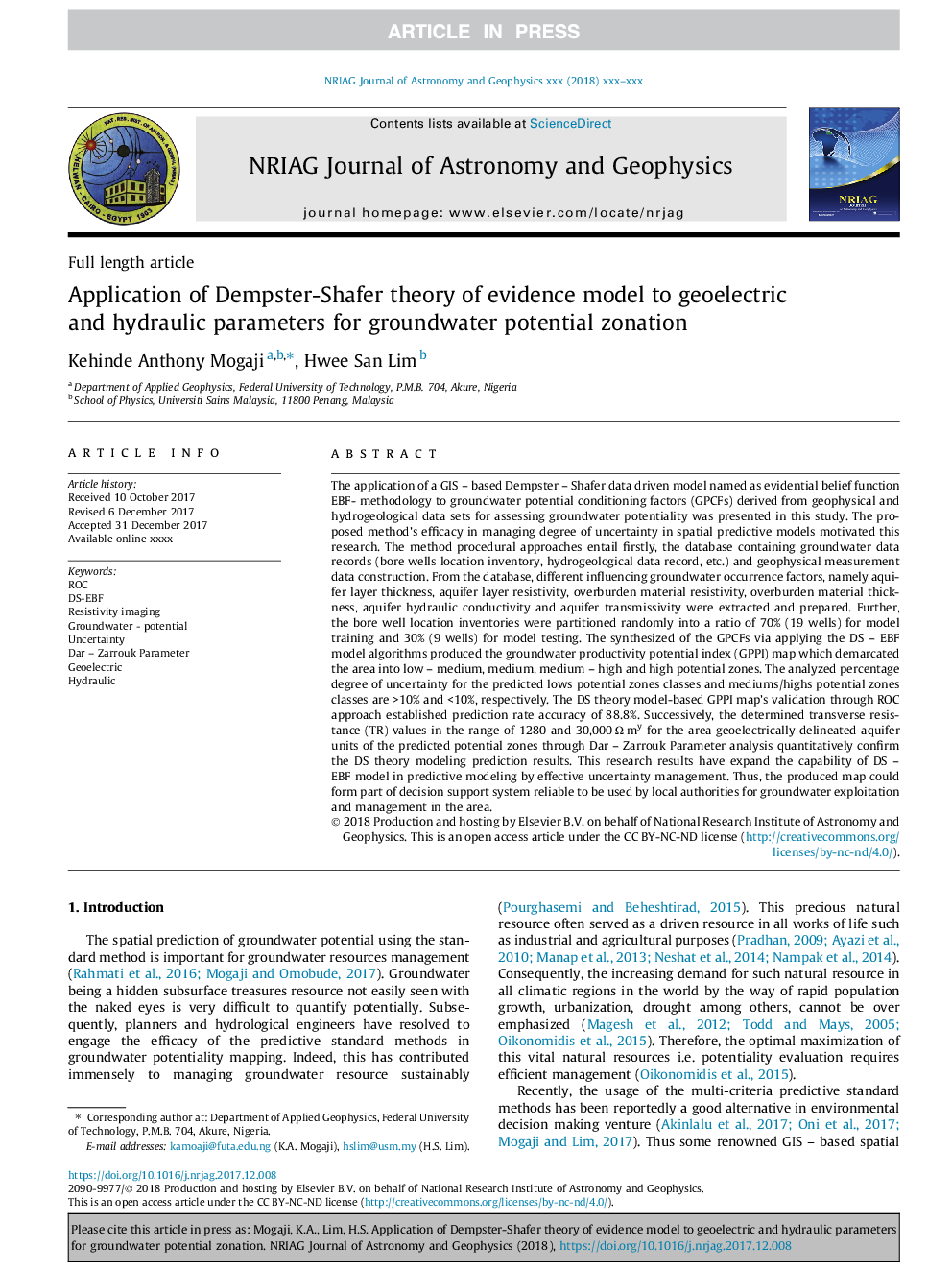| Article ID | Journal | Published Year | Pages | File Type |
|---|---|---|---|---|
| 8141620 | NRIAG Journal of Astronomy and Geophysics | 2018 | 15 Pages |
Abstract
The application of a GIS - based Dempster - Shafer data driven model named as evidential belief function EBF- methodology to groundwater potential conditioning factors (GPCFs) derived from geophysical and hydrogeological data sets for assessing groundwater potentiality was presented in this study. The proposed method's efficacy in managing degree of uncertainty in spatial predictive models motivated this research. The method procedural approaches entail firstly, the database containing groundwater data records (bore wells location inventory, hydrogeological data record, etc.) and geophysical measurement data construction. From the database, different influencing groundwater occurrence factors, namely aquifer layer thickness, aquifer layer resistivity, overburden material resistivity, overburden material thickness, aquifer hydraulic conductivity and aquifer transmissivity were extracted and prepared. Further, the bore well location inventories were partitioned randomly into a ratio of 70% (19 wells) for model training and 30% (9 wells) for model testing. The synthesized of the GPCFs via applying the DS - EBF model algorithms produced the groundwater productivity potential index (GPPI) map which demarcated the area into low - medium, medium, medium - high and high potential zones. The analyzed percentage degree of uncertainty for the predicted lows potential zones classes and mediums/highs potential zones classes are >10% and <10%, respectively. The DS theory model-based GPPI map's validation through ROC approach established prediction rate accuracy of 88.8%. Successively, the determined transverse resistance (TR) values in the range of 1280 and 30,000â¯Î©â¯my for the area geoelectrically delineated aquifer units of the predicted potential zones through Dar - Zarrouk Parameter analysis quantitatively confirm the DS theory modeling prediction results. This research results have expand the capability of DS - EBF model in predictive modeling by effective uncertainty management. Thus, the produced map could form part of decision support system reliable to be used by local authorities for groundwater exploitation and management in the area.
Related Topics
Physical Sciences and Engineering
Physics and Astronomy
Astronomy and Astrophysics
Authors
Kehinde Anthony Mogaji, Hwee San Lim,
